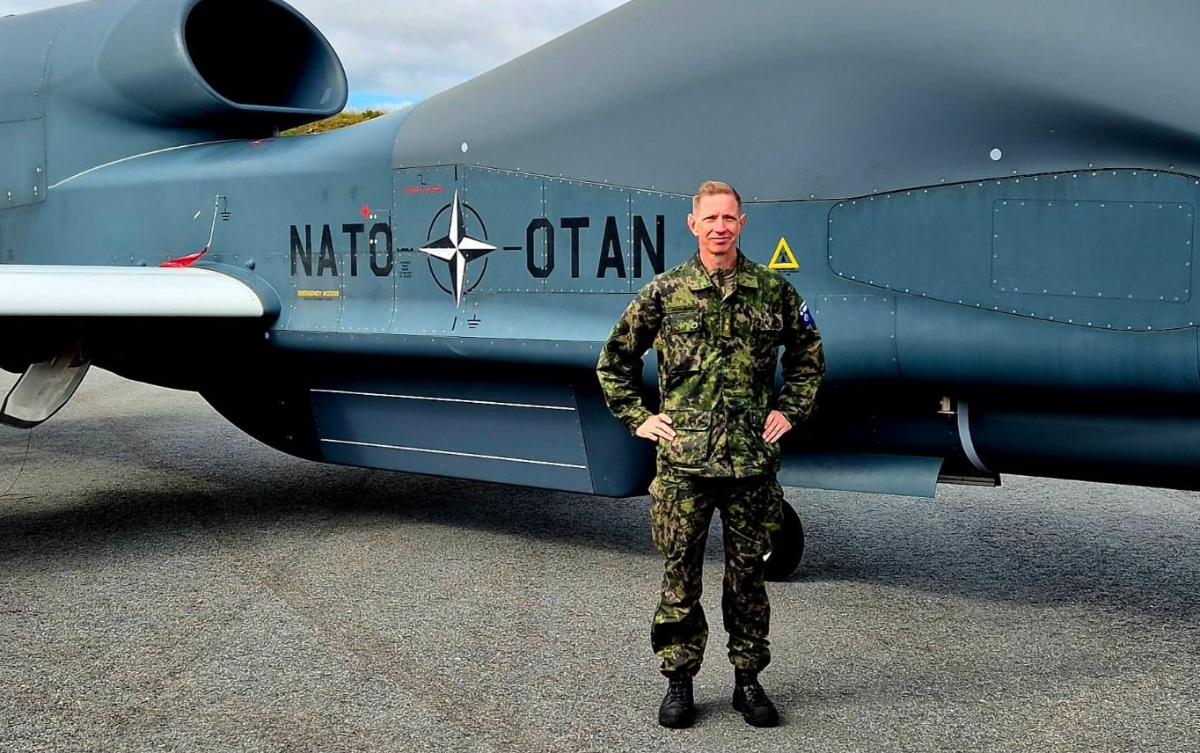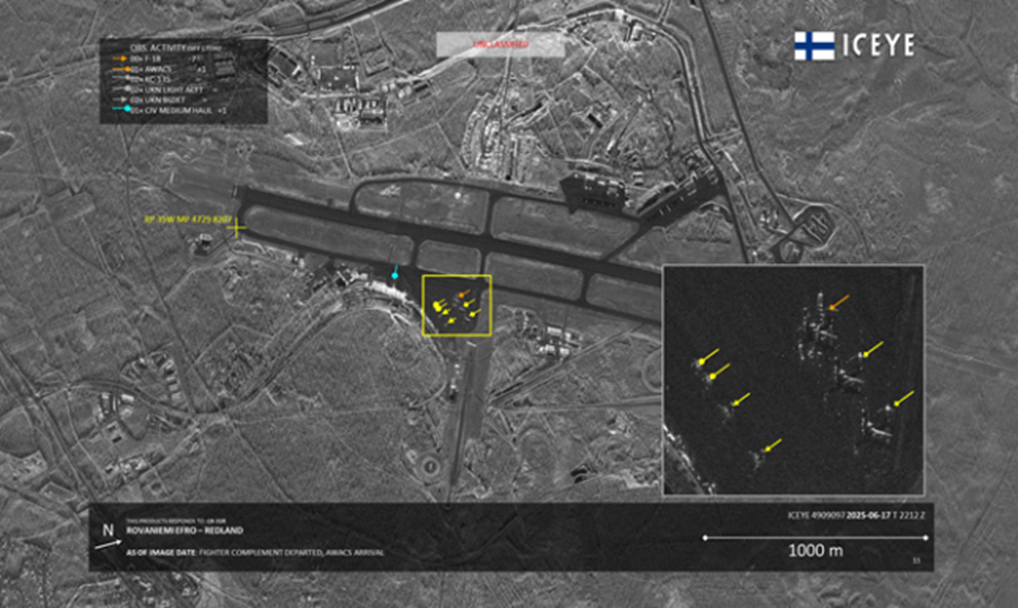Review on the development of space capabilities by the Commander of the Finnish Air Force

Commander of the Finnish Air Force, Major General Timo Herranen starts as a Space Commander of the Finnish Defence Forces alongside his duty. In this article, Herranen provides insight into what space capabilities come down to from the viewpoint of defence.
Space is an integral part of the modern battlefield. Military utilization of space consists, among others, of: an operational picture of the systems and capabilities in space (for instance, satellites and their payload such as visible-light cameras and radars); surveillance, reconnaissance and early warning; precision navigation and time services (including GPS, GLONASS), satellite communication, and also electronic and physical influencing from and to space. In the battles in Ukraine, the space carries a significant role on all fronts, including information transmission and use of long-range weapon systems.
Alongside my duty as the Commander of the Finnish Air Force, I will start as a Space Commander of the Defence Forces. In this article, I will discuss the background of the issue.
The Defence Forces has done work involving the space for years, especially as surveillance and reconnaissance, communication and space situational awareness (SSA) are concerned, so it is not a new concept. With the Command of Space, structures will be built for the Defence Forces that enables tight cooperation which combines different sections and narrows the most important parts of the whole under the direction of one leading command. This will ensure that we are progressing towards a shared goal. It will also give us one voice for speaking to both our international and national partners.
International cooperation plays a central role
Space is an arena of cooperation especially for a country the size of Finland, because we cannot produce all the necessary capabilities by ourselves. This applies to almost every single nation. The best in the military field and also in civilian operation are naturally the United States and China. The complex in the United States is managed by the US Space Command and the operative functions are largely the responsibility of the United States Space Force which also has stationed troops in Europe. In fact, I met the Commander of the European space troops a few months ago and we agreed on a closer cooperation concerning some sections and the work is underway.
The climbing pace of China's space capabilities is tough, and its number of space launches is rising almost exponentially. After 2015, as China proclaimed space as a new military operational environment, its space capabilities have grown over 600 percent. At the end of 2024 China had over 1,000 satellites in the orbit. China possesses different kinds of satellites, ranging from optic, multispectral and radar satellites to radio wave operated ones. In 2007, China proved out its capability to destroy satellites from the ground as it destroyed its weather satellite with a missile. Those kinds of operations leave fragments in space which will endanger other space activities. China aims to broaden its portfolio continuously and we also have to take it into account in space development.
Russia appears as a major power in space, but it is leaving behind the previously mentioned. In the near-by areas of Europe its capabilities are still without a match and Russia’s capabilities, for example, in surveillance and reconnaissance are of high quality. Russia also utilizes commercial applications widely and collaborates with China. However, Russia cannot challenge by itself either of the powers mentioned before.
As an organization, NATO is also increasingly turning its attention to space. NATO has multiple space-related initiatives on the move; albeit that the space capability of NATO rests upon national capabilities which are supplemented by the joint funding of NATO.
In the Nordic countries, space programmes are also running. The programme in Norway may have been featured most widely and they possess capabilities within satellite communication, among others. Sweden builds and has already partially finished building a capability for space launching. Space-related organizations within the Nordic countries have their differences, but Sweden, Denmark and now also Finland coordinate the Defence Forces’ space activity in the Air Force. Cooperation between the Nordic countries provides possibilities for bringing together space activities, when—as it stands also within the field of air operations—we will reach critical mass together in the space market.
An international environment relies on a trading system that is based around shared interests and realpolitik. Collaboration within those circles requires to represent oneself as a unified, cooperative party who also brings capabilities. Because of this, we must also carefully assess the investment towards space. If a country has not made contributions to space, it will not have an access to those conversation tables in which space is a serious and goal-oriented topic. “You are in or you are out!”
Collaboration between military and civilian actors in space capability development
Space is not merely an operational field for soldiers, but nearly all services in the contemporary society are reliant upon space in one way or another. Space functionalities include nowadays, for example, communication, positioning, time tracking, weather forecasting, and say, monitoring widespread forest fires. For this reason, cooperating between civilian and military actors is important for developing space functions. Both parties have their own clearly defined roles. Capabilities exist on both sides, although the use of those capabilities differ. Several capabilities may be used for both purposes in which case they are understood as dual-use capabilities. We in Finland co-operate within the framework of the National Strategy for Finland’s Space Activities, including the Finnish Meteorological Institute and the National Land Survey of Finland. In the development of the strategy, ministry-level actors also have a significant role. Upper-level coordination takes place in the Finnish Space Committee.
Development of space functions is prepared within the Defence Forces on a long timespan progressing phase-by-phase. My first task as a Space Commander is to gather the existing competence and ensure the progress towards shared objectives. This applies to both military and civilian activity. As a concrete measure, we are preparing to open a Space Operations Centre in the Defence Forces. It will carry out tasks involving the operational space picture and its delivery. We will also bolster the delivery of information attained from space to operative stakeholders, that is, to the services and for instance, army corps. The aim is to gain as real-time operational picture of the capabilities in space as possible, and at the same time establish a fast delivery of the products available. In today’s world it is possible to follow operational environment quite carefully from space despite the weather and produce information on the changes in disposition change, weapon system targets or approaching threats such as ballistic missiles.
Cooperation becomes closer with the United States’ space troops, in the framework of Nordic cooperation and NATO, as well as nationally. This requires close networking and also cooperation that is deep, bilateral and classified. For opening and maintaining channels of collaboration, key international forums are valuable such as the meeting held between space commanders this spring in Colorado.
Finland has commercial space competence of high quality, for instance, at ICEYE which produces SAR satellites (Synthetic Aperture Radar). ICEYE is a global actor that was acknowledged for its competence in a global seminar for space commanders, held by the Command of the United States Space Force this spring. Currently, ICEYE’s constellation of over 50 satellites continues to expand. The latest launch took place early by the Finnish time on June 24. Several nations in our vicinity like the Netherlands and Poland have acquired parts of the constellation. ICEYE published a contract made as a part of NATO Allied Persistent Satellite Surveillance (APSS) project last week. Commercial capabilities are no match for the best military applications, but the capability of ICEYE is at the moment as a global market leader of its portfolio at a level in which it can be efficiently employed for the recognition of military targets and the progress is continual and rapid.
The Finnish Ministry of Defence entered into a letter of intent to acquire its satellite capacity from ICEYE. The implementation of the letter of intent is currently prepared in the Defence Forces. Procurement of the capacity in preparation enables recording activity on Earth for the demands of authorities in a frequency that is dependent on the size of the constellation while independent of the weather conditions. Capability in own hands adds to the capacity in use through other means and creates independence. It is possible to use this capability for surveillance and identification of targets and activity both in training and operative activities. Our aim is as independent and real-time use of the capability as possible, and sharing acquired information for those in demand by the Space Operations Centre established by the Finnish Air Force. As an example, in the Atlantic Trident 25 exercise that just ended we used ICEYE products as a part of the air operation execution (in the picture, the red nation base of the exercise in Rovaniemi). Exercise activity provides valuable practical-level information on the utilization of space in operations.

Right now, developing space functions means recruiting staff gradually and gaining proficiency, for example, by practising chains of operations during exercises and collaborating with co-operation partners mentioned earlier. We will start recruitment following a crawl-walk-run principle by reinforcing the existing capability. However, I envision that as we are reaching the next decade, development work will require wider concentration of efforts and additional resources.
Comprehensive development will be fit in with other development of the Defence Forces and it will be prepared as a part of the normal planning processes. The role of satellite communication in using weapon systems, for example, increases all the time and for that reason it is important to ensure the continuity of this capability under every circumstance. Almost every weapon system is dependent upon space-based positioning and especially timing. For this reason, developing the entities should take place in collaboration with other actors.
The space is very closely involved in human activities, and in warfare its role is indispensable for all services. It’s like air is to human. You hardly notice it, but without it you can’t stay alive. Following the Finnish idea of comprehensive security and defence, and closely collaborating both nationally and internationally makes us a credible actor also at space—and by this, our defence is strengthened by our allies.
The space is often considered to be something far and distant, but in the end, it is quite close to us; depending on the definition, only 100 kilometres away and the same laws of physics apply there like on the surface of Earth here. As an exception to activity taking place on Earth, territorial borders are not known in space and it is for this that international legislative basis differs from the one followed on earth’s surface. Space is not merely an arena of friendly activity, but it is constantly used also for hostile activity. Even a literal arming of the space is not a foreign idea. Interference, blinding of sensors and space-based espionage are already a part of this day and age. If you are not in space, it is certain that everyone else is. It is why developing space functions is crucial.
Development of space functionalities requires profound and versatile high-technology competence, but also everyone on the battle field should understand the basic principles of the activity. We have our hands full with this, both in recruitment and training. It is worthwhile for those who have interest in the field and are active, go-ahead and open-minded individuals to follow our recruitment. In addition, having strong competence in geographic information lays a good foundation for applying to the positions opening later.
With these thoughts, I approach the development of space functionalities with great enthusiasm and interest.



